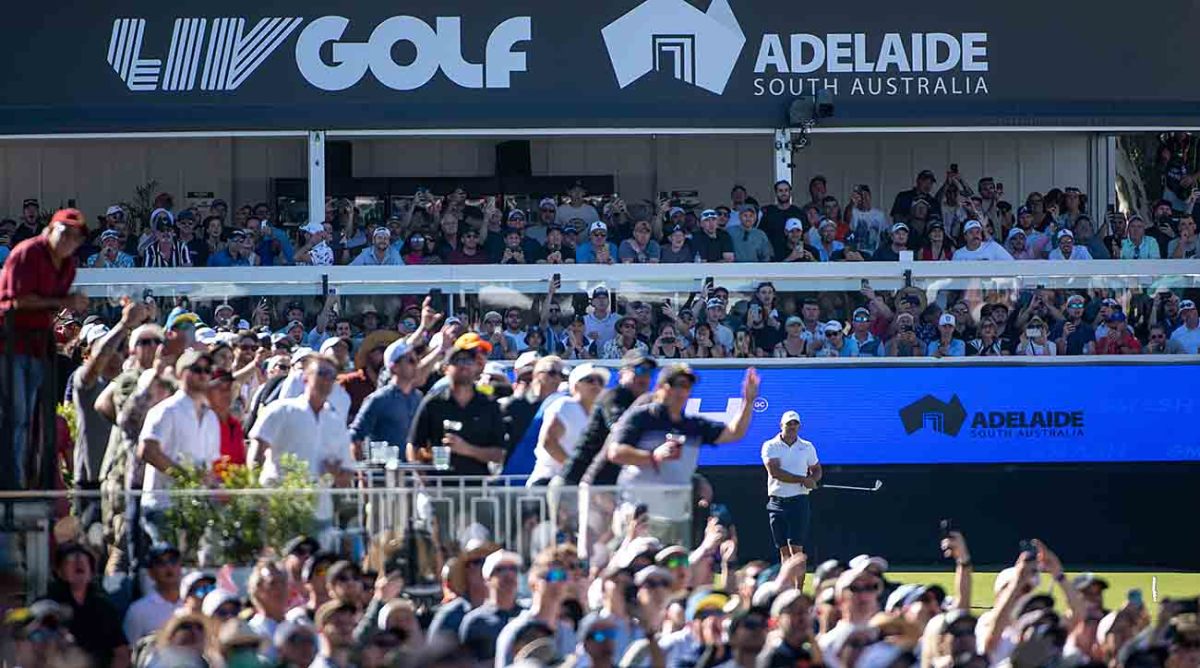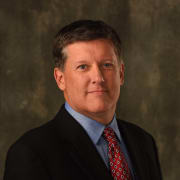LIV Golf Finds Success in Australia, Going Where Other Major Tours Don't

More Weekly Read: When Might We See Tiger Again? | Fore! Things
The phrase "growing the game" is so overused by the various golf entities that it’s difficult to decipher what it means. Is it offering opportunities to those who can’t afford it? Trying to nurture talented players who might not otherwise have the means? Is it growing the audience of potential golf watchers at the pro level? Is it bringing the game to places that don’t normally get big-time golf?
It's an easy net to cast for any group pushing along a new idea, and LIV Golf has been guilty of it—which is no different from the PGA Tour, USGA, PGA of America, R&A and Augusta National. They all have their initiatives, and all put them under this broad heading.
It’s not to say there isn’t tons of good work being done. Augusta’s Latin America Amateur and Asia-Pacific Amateur events, for example, have spread opportunities to those regions with the lure of a Masters, U.S. Open and British Open invite. All of the Tours do good work in these various areas, even if it seems more like a convenient expression than a real push for expanding opportunities.
LIV Golf gets a lot of eyerolls when "grow the game" talk is bandied about. The teams that are part of LIV, which one day it hopes will be sold as franchises, broadly discuss how they can be part of initiatives that introduce people to the game. Or help them learn it. Or grow it.
But the biggest talking point LIV could use is what just occurred in Australia: taking the pro game to a market that is starved for it.

The LIV Golf Adelaide event won by Talor Gooch saw the biggest crowds and interest so far of the 12 LIV events played across two seasons.
Aussies love their sports and their golf. Had the PGA Tour gone there with a slew of top-ranked players, it would have received the same type of interest. Same with the DP World Tour. But those entities do not play in Australia on a regular basis. And so LIV Golf stepped in.
And what is now the Australasian Tour is not a viable alternative for top-ranked players. The recently-completed season saw just two tournaments with prize money more than $1 million—the Australian PGA won by Cam Smith in November and the Australian Open won by Adrian Meronk.
In other words ... Gooch, who won $4 million, got more than double the entire purse of two of the best events.
The rest of the tournaments are mostly comprised of players looking to move on to a bigger circuit.
So along comes LIV Golf offering the opportunity to see the likes of Smith, Dustin Johnson, Brooks Koepka, Phil Mickelson and a slew of other "name" players who have likely never played there.
"I really hope it’s bigger to be honest," said Smith following the final round. "I think we can do more stuff, get more people in here. There’s obviously a want in Australia, I think, for really high quality golf. And I think the fans here really enjoyed what LIV offers. There’s no reason why we can’t make it bigger."
There are talks about playing a second event in Australia in future years, perhaps going to Queensland, Sydney or Melbourne and giving the country back-to-back tournaments. It makes sense. Go to markets lacking professional golf or at least familiar players.
"To me this has been such a successful week," Paul Casey. "Everybody here in Adelaide has had just the best time. They’re so starved of world-class golf. I think this is the best field they’ve ever had had assembled in Australia outside of maybe a Presidents Cup. They’ve embraced it."
While it is not going to be anywhere near as big, this week’s tournament in Singapore promises some of the same interest and excitement. It was evident last year in Thailand and LIV could see the same kind of interest in Spain later this year.
That’s why future schedules might skew more international. This year, LIV has six tournaments outside of the United States—Mayakoba, Adelaide, Singapore, Valderrama, London and Jeddah.
Mayakoba was never a huge draw for the PGA Tour events played there and was not for LIV Golf either. It’s a tourist destination without a huge population base nearby. Jeddah, of course, is a poor place for a golf tournament; Saudi Arabia—despite its sovereign wealth fund, the Public Investment Fund, being its backer—is not a golf country. The annual Saudi International is not well attended and is an unfortunate choice for the season-ending team event.
You could possibly see LIV going to Japan or South Korea or Ireland. While that does not necessarily help with their quest to gain a great reach in the United States, it helps get the game to other parts of the world that are not as fortunate to see top players.
LIV Golf and the Ryder Cup
The high finishes of Brooks Koepka and Patrick Reed at the Masters renewed the discussion about whether or not LIV Golf members will be eligible for or could even be picked by captain Zach Johnson for the U.S. team that takes on Europe in September.
While LIV golfers are ineligible to compete in PGA Tour events, the Ryder Cup—which most figured would not be possible—is a bit more murky.
“No decisions have been made," Johnson said last week at the Zurich Classic. “There’s still a lot of time left in that regard, and so many fluid factors.’’
The top six players in the Ryder Cup points standings—which goes by money earned on the PGA Tour—through the BMW Championship will automatically qualify for the team. Johnson will then have six at-large selections following the Tour Championship.
For a LIV player to make the team on points will be extremely difficult. It basically would require a victory in one of the three remaining major championships. Or perhaps two runner-up finishes.
That leaves the at-large route, and it does beg the question: if Koepka, Reed or Dustin Johnson—who led the team with a 5-0 record during its victory two years ago at Whistling Straits—show form this summer and in the majors, would they be eligible for a pick? Would Johnson even want them?
Johnson said he would rely heavily on input from those who make the team. As well as his assistant captains, such as Steve Stricker, who was his partner at the team event in New Orleans.
"Not to get overly in the weeds with all this, but in order to garner Ryder Cup points or be eligible for PGA of America Ryder Cup points and PGA Championship points, you have to be a member of PGA of America," Johnson said. "Those individuals that have left the PGA Tour to my knowledge, are still members of PGA of America. There’s a grace period involved there. I don’t know the specifics."
The PGA of America offered a statement on the matter, first reported by Golfweek.
"PGA of America membership is a requirement to be eligible to participate on the U.S. Ryder Cup Team," the statement said. "Under the PGA of America membership rules there are classifications that currently allow LIV Tour members to retain their PGA of America membership status. PGA Tour members are considered A3 classification.
"Because the LIV players paid their membership dues before June 30, 2022, they will retain their membership through the end of June 2023 and then through a grace period that runs through the end of June 2024. After that, under our current rules, they may apply for PGA’s Reserve Member classification. A3 members who resigned or are no longer PGA Tour Members (suspended) are still PGA of America members."
So that is why Koepka is listed in the standings, at 17th. Phil Mickelson is 22nd, with Dustin Johnson 30th and Reed 34th. And that does provide a loophole for them to be picked if Zach Johnson and the members of his team see reason to do so.
Scottie Scheffler, Max Homa, Cameron Young, Jordan Spieth, Sam Burns and Patrick Cantlay hold the top six spots with a long way to go. Others in the top 12 are Collin Morikawa, Xander Schauffele and Justin Thomas.
You can make the argument that the LIV players are not necessary to fill a strong U.S. team. Zach Johnson already has a good template with partnerships that could would undoubtedly include Spieth-Thomas, Schauffele-Cantlay, Scheffler-Morikawa or perhaps Scheffler-Burns. Not to mention the possibilities with Tony Finau, Homa and Young. You start to run out of spots on the 12-man team.
Still, Koepka and Dustin Johnson have been strong members of the U.S. teams for years. And this will undoubtedly be interesting to see play out.
